Written By: L.T. Tolman
Every truck has its quirks; common problems and issues that pop up time and time again. 6.0-liter fords for example have a unique air intake system that siphons cash directly from your wallet. The LB7 Duramax was designed to go through injectors about once every 100k miles, and the 12-valve Cummins has a nice little metal dowel pin known to wiggle its way free and destroy your front gear drive and timing case when its least convenient. But today, we’re not talking about engines, but rather suspension and steering.
Since four-wheel drive trucks were brought into the mainstream sometime in the 1960’s, almost every single one had a solid front axle. They are strong, durable, simple to work on, and require very little maintenance because they have so few moving parts. Over the years, many upgrades were made to the solid axle trucks in the suspension and steering department, but by 2002, all half ton trucks had made the switch to independent front suspension for its ideal ride quality and handling, but to this day, heavy-duty ¾ and 1-ton trucks still rely on the superior strength and simplicity of a solid axle for 4-wheel drive models. But not GM. They wanted to be… “different”.
Declaration of Independence
The last year of any solid axle for GM was in 1991, with the K5 Blazer, Suburban, and V3500 trucks. Since then, all pickups, even the 1-tons, used IFS. The parts that hold up the truck and make it move are very strong. Upper and lower control arms were stamped and welded together at first, then later were forged from solid steel. CV axles and the front differential are also very strong, with failures almost unheard of, other than being worn from high mileage. But evidently, the engineering team called in sick on the day of steering design, and instead the accountants just threw on some cheap leftover parts from an S-10. While the independent front suspension of the HD Silverado and Sierra rides smooth, one of the quirks of a Duramax is it has the ability to bend tie rods and other steering parts into some pretty interesting shapes. And while this issue is amplified with increased power, lifted suspension, wide tires, liberal throttle application, and just about any other fun activity, even a 100% bone stock truck can “do the Duramax”.
The geometry of the suspension has a lot to do with this issue. When you engage four-wheel drive and apply power, the front end has a natural tendency to rises up slightly and as a result, the wheels want to toe in. The further the front end raises up, the steeper the angle between tie rod and center link gets, toe-in increases further, and the more pressure is applied against the pitman arm, idler arm and steering box. This is the case on any 4wd IFS truck, but the Duramax makes a lot more torque than a gas burner, and when you combine lots of torque with flimsy steering parts, you have the perfect storm for carnage. Depending on what you are doing, tie rods are usually the first to go (usually in spectacular fashion), followed by the center link and pitman/idler arms. If things get too wild, the idler arm pivot can break, and as collateral damage, sometimes even the steering box. Luckily these quirks are so common, there are plenty of solutions for every budget, driving condition, and power level.
- Budget Builder: If you have a stock tire size with a near stock power level, you can prevent any potential issues for about 300 bucks. Since the long narrow part of the stock tie rod is the weakest link, you can reinforce it with a sleeve kit. Most are around $80, and they’re easy to install. All you have to do is disassemble the inner and outer tie rod, slide on the reinforcement sleeve, and put it back together. The sleeve is over double the thickness of the stock tie rod, so strength goes up a ton. Then, you’ll want to strengthen the center link, so a set of pitman and idler arm supports go on. These usually run in the neighborhood of $220 and attach to the pitman arm and idler arm while surrounding the center link, preventing any twisting. With a small investment and a couple hours of work, your front end will be much stronger, and will last for quite a while on a stock or mildly built truck.
- Weekend Warrior: This is for the guy or gal who has a hot tune, a few bolt-on parts, and maybe is pushing the 500-horsepower mark. Maybe you run oversize tires and a big lift, or like to launch your diesel at the strip, or attend a sled pull and dirt drag every now and then. Almost all diesel owners fall under this category. Simple sleeves won’t last long here, so it’s a good time to install something stronger like Cognito’s Alloy Series tie rods. The shafts are larger and stronger, and the pivot joints are oversized. In addition, it’s a good idea to replace the stock pitman and idler arm with something like the Extreme Duty series from Rare Parts. This combination will run in the ballpark of $600 but is still a good middle of the road option; plus is cheaper than the damage you’ll get from driving your truck into the wall when a stock tie rod breaks on a launch.
- ULTIMATE: If you are a hardcore drag racer or sled puller, this part is for you. For the ultimate IFS steering setup, you’ll need to pull out all the stops, throw away everything from GM, and start with a clean sheet. First, the wimpy stock idler arm pivot will have to be upgraded, and since the frame mount has been known to flex, some gussets are welded onto the frame using a kit from Rare Parts. Then, the pitman arm and idler arm need to be as big as possible, along with the center link. PPE makes a Race series of parts that use a massive 7/8” pivots and a straight center link that can hold up to all the abuse you can possibly inflict. Top ‘em off with some stage three tie rods, and your steering will be as strong as it gets. One drawback is the straight center link will take away a little bit of turning radius, which is something to consider if you do any street driving, but ultimately is a small price to pay to get the ultimate IFS steering setup.
It’s all about getting the right angle
IFS issues are bad enough on a stock height truck, and while the steering upgrades mentioned will do their job if used properly, a lot of common upgrades work against those stronger parts you just installed. When guys crank up their torsion bars or run leveling keys to gain a few extra inches of ride height, the tie rod angles can get pretty extreme, which accentuates the inherent problems. A steeper angle puts much more stress on the center link and tie rods, making the parts easier to bend with less power. A popular trend and better alternative is to run a lift kit lower than it was intended: for example, if you want to run a 35” tall tire and only need 4” lift to do so, choose a 6” kit but de-crank the torsion bars to a 4” setting, which will keep the CV and tie rod angles flat. When the tie rod is level with the center link, its much less likely to break anything.
Wheels are another thing most people fail to consider when it comes to steering strength. While a deep dish -44 offset wheel looks great sticking out past the fenders, wider wheels create a lot more leverage against the steering parts, which makes it easier to bend and break parts. Simply by swapping to a narrower or more positive offset wheel can have a tremendous positive impact on your front ends geometry during 4wd use.
IFS for All
While the IFS equipped GM truck isn’t as inherently strong as its solid axle cousins from Ram and Ford, they do ride smoother and handle better. And once you overcome a few basic flaws, they can give years of reliable service, and even withstand some serious abuse from just about anything, from a 1,500hp drag truck to a 5,000 RPM hook at the sled pull. All too often people get excited and start adding power and spend all their hard-earned money on go-fast goodies but forget about the rest of the puzzle. I’m all about making diesels faster, but you don’t want to add power at the expense of safety. For me, it makes a lot more sense to have a strong foundation, especially with something as important as steering. You must be smart about how you build your truck and match your power goals and intended usage with the parts you select and install. But regardless of how you end up using your Duramax, there is a steering setup that will work for everybody.

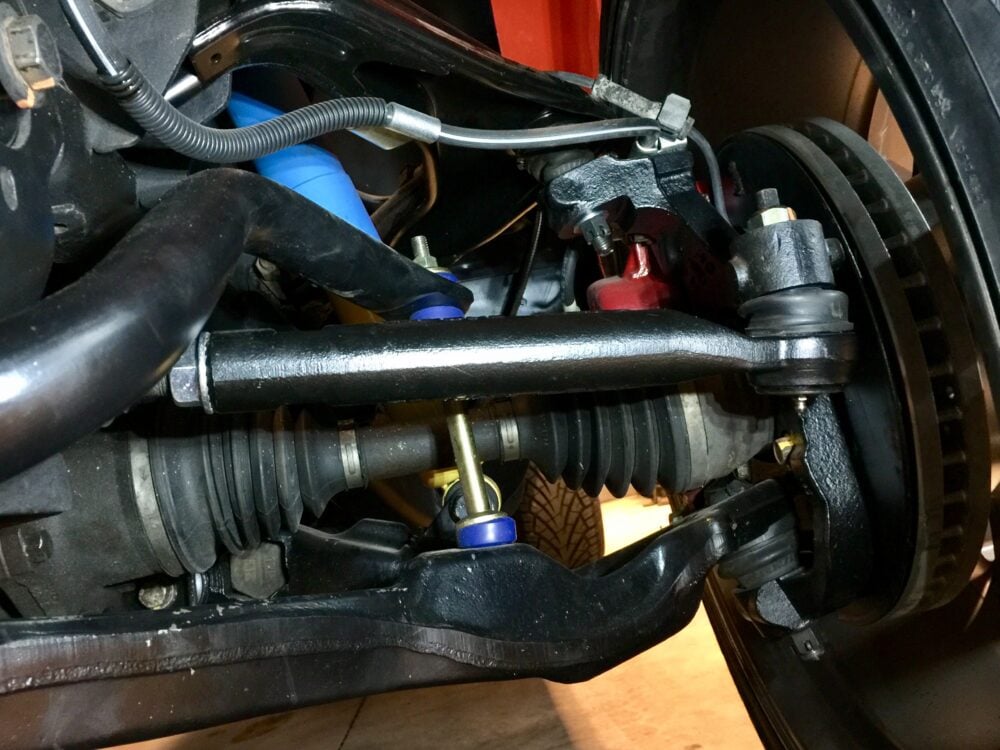
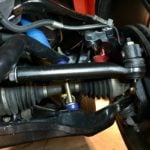
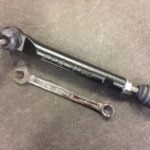
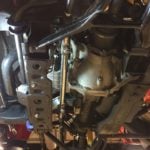
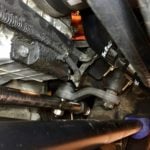
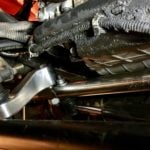
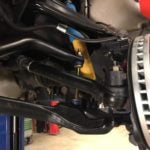
I just had a accident in my 11’ 2500. Steering failure landed my truck, horse trailer, and horse in a drainage ditch. Total lose of everything including my horse. I was the only thing that survived. Banged up a little the OnStar is the only thing that saved me from drowning as i was knocked out for about 20 minutes. If i could upload pictures i would. Please everyone upgrade your front suspension steering! It may save your life!
I have a 2020 Duramax 2500 an I broke tie rob now Chevrolet dealership don’t want to stand behind it they’re wanting me to pay for the repairs what should I do
The first thing I’d recommend to do is take the truck to a different dealer. If they also deny the warranty claim, which they might, especially if the previous dealer flagged the truck for either having a lift kit they’re blaming on the broken tie rod, then you have the option to fight them on it. To a certain degree, the burden of proof lies on them to prove the reason they’re denying the warranty claim. If it is due to a lift kit, then the Magnuson Moss Act covers you, which again puts the burden of proof on the dealer to prove that the lift kit caused the failure, at which point, you’d be responsible for paying for the damage. If the truck is stock, then by all means it should be covered, unless its deemed to be caused from “extreme” driving conditions (i.e. abuse in their eyes).
I don’t have a diesel truck. Mine is an 05 Chevy Tahoe. 6″ Rough Country lift and 35 12.5 20 tires.
I have bent and broken both inner tie rods and broke the driver side cv axle twice. Reading this has told me I should upgrade to diesel size parts and to take my money pit to a lifted truck shop that can steer me in the right direction. TY!
Well, glad we could help motivate you! Thanks for reading and taking the time to respond.
I have a 2018 Silverado LTZ66 Duramax Allison transmission. I’ve had electrical problems that other night I had to stick it in four-wheel-drive to get off the farm when I got to the end of the drive. I shipped it back to two wheel I didn’t feel like it transferred so I backed up put it back in four-wheel-drive driver 10 foot transfer back to 2 Wheel Dr. as it is in a transferred iDrive 70 miles this out of my truck for a smoke under the hood is smoking and on the left side fluids coming out I blame it on the ECM am I right around?
Hi there, William, sorry for the troubles with your truck. First, does it seem like the issue of it not coming out of four wheel drive and the smoke seem related? Have you ever had the issue of it not disengaging out of 4WD before and not had the issue with smoke? Can you tell which fluid is coming out of the left side? Are we talking engine, transmission, is it coming from the transfer case? Sure, its possible the ECM is causing it to not go into 2WD and then the transfer case overheated. Have you checked for any codes that might lead us in a direction as to whats going on?
Almost a year and a half ago, I purchased the PPE heavy duty kit. Centerlink, Pittman, idler, ties. The centerlink bosses for the idler and Pittman weren’t drilled out enough to allow the 7/8” bolt to go through. They sent another one. Unfortunately, The set up does not allow for friction due to wear and tear over time on the 7/8” bolts for idler and Pittman through the centerlink. I had to tighten periodically. Eventually, the holes were wallered out and would allow movement and noise. Just ordered the Kryptonite kit that has ball joints instead of bolts. Just my experience.
Thanks for sharing your experience, Sean. This sounds like it was most likely PPE’s “race” welded and drilled center link that requires their “race” pitman arm and idler arms for proper fitment. Just what it sounds like because you mentioned the 7/8″ bolt, which that kit has, but the stock one is 9/16 inch. Anyways, sounds like you’re getting it fixed up with a Kryptonite kit, which you’ll be very happy with, its a great upgrade.
https://www.dieselpowerproducts.com/p-11726-ppe-race-welded-and-drilled-center-link-01-10-gm-66l-duramax.aspx